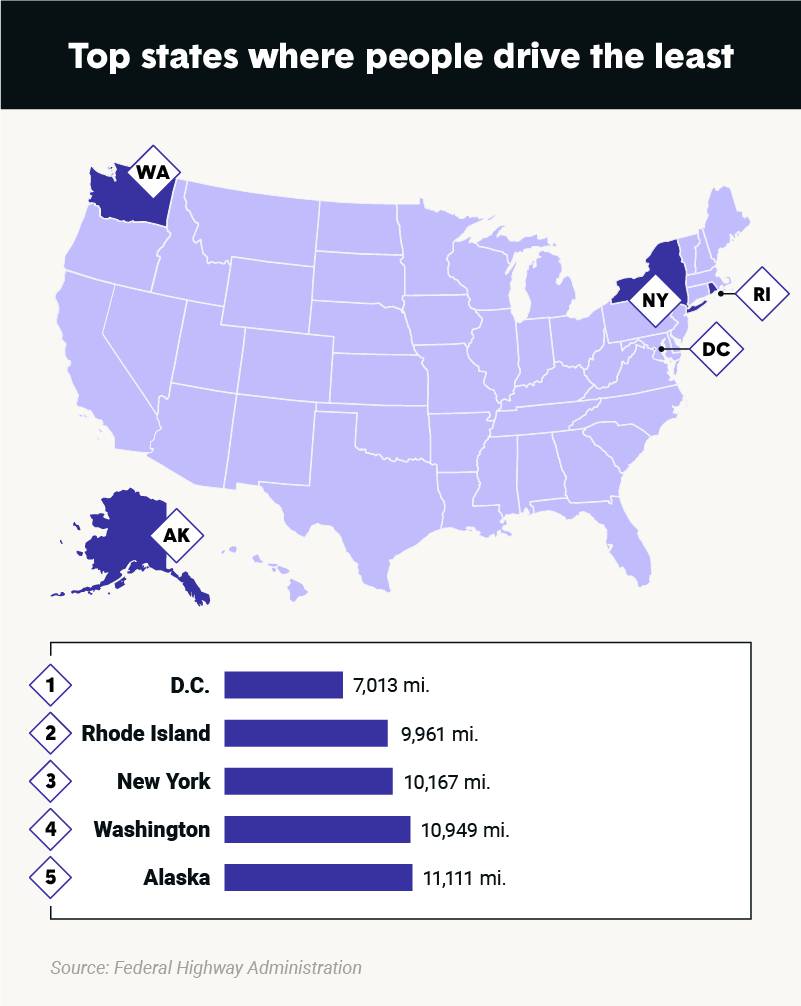Driving is a central part of the American identity, and the amount of miles Americans drive each year has exploded in the time since the federal government founded the Interstate Highway System in the 1950s. In the past 40 years, the number of miles Americans collectively drive has increased from 1.5 trillion to 3.2 trillion miles: That’s more than twice as much driving with a population only 1.5 times as large.
The average miles driven per year by Americans has now reached a total of 14,263 miles. This breaks down to an average of nearly 1,200 miles driven per month. That sum would cover almost three round trips between Los Angeles and New York. As a collective, American drivers cover 3.2 trillion miles each year, enough to take nearly 5,000 trips to the moon and back.
Using data from the Federal Highway Administration, we looked at American driving trends and found:
- California posts the most total miles per year (340 billion), but Wyoming has the highest per capita mileage at 24,000 each year.
- Drivers in D.C., Rhode Island, New York, Washington and Alaska drive fewer miles per year than drivers in any other states.
- Men drive around 6,000 miles per year more than women on average, and after retirement drivers post around 30 percent fewer miles per year.
- During the COVID-19 pandemic, vehicle travel decreased by as much as 60 percent during the initial lockdowns in April 2020.
Since annual mileage is one factor that influences car insurance rates, we wanted to take a deep look at how much Americans drive each year. Read on to see all of our findings or jump ahead to our infographic for an overview.







